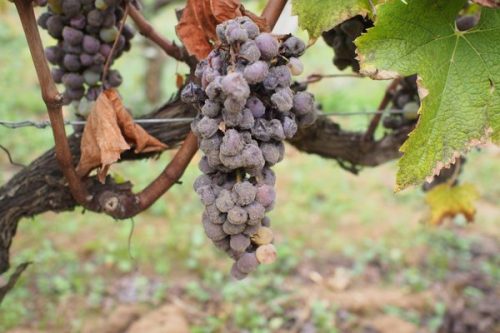
So far, in looking at alternative Bordeaux, I’ve explored organics and biodynamics, taken a tour around some of the less well known appellations, and also considered natural approaches to winemaking. But there’s another side to Bordeaux that needs exploring, and which is often neglected: the white wines. These include dry wines, which can be ageworthy and very fine, and of course the famous sweet wines of Sauternes and Barsac.
Denis Dubourdieu was one of the most important figures in developing the white wines of Bordeaux, both sweet and dry. I caught up with him in 2014 to interview him: he was then 65, and sadly died in July 2016 far too young at the age of 67. Two years later, I visited again, this time to spend time with his son Jean-Jacques Dubourdieu, who is now running Domaines Denis Dubourdieu.
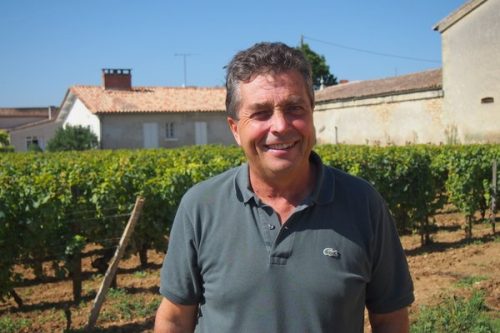
Denis was primarily a research scientist, and spent half of his time working for Bordeaux University (where he was president of the Institut des Sciences de la Vigne et du Vin), and half consulting and working on his own project, Domaines Denis Dubourdieu, which consists of five estates. We met at Château Doisy-Daëne in Barsac, where he was born. He lived in another of the estates, Château Reynon.
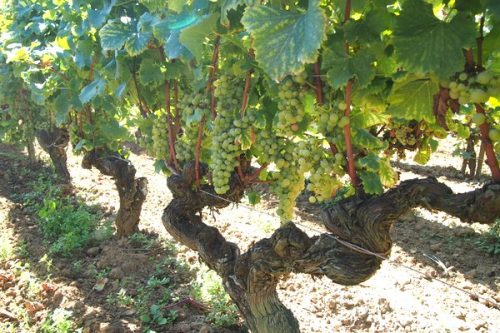

His consultancy business was significant and involved 70 clients, a third of whom were in Bordeaux, and as well as Denis, the team included Valérie Lavigne and Christophe Ollivier. ‘I have three lives,’ he told me, ‘but they are not so far away from each other: I teach what I do, I do what I teach.’ It is his contribution to what we know about the flavour of white wines, both dry and sweet, which will probably have the biggest legacy.

Denis’ father was the first to make a dry white wine in Sauternes in the 1950s at Doisy-Daëne, many years before Yquem began making their Y. He thought that the limestone had a lot of potential for dry whites. But there were still very few dry wines from the area before Denis began working on them. ‘At the beginning of the 1980s only a few estates made a distinctive wine at this time,’ he recalled. He became involved in the production from his family estate, and together with his wife Florence actually established a new white wine estate in the Graves, Clos Floridène, in 1982.
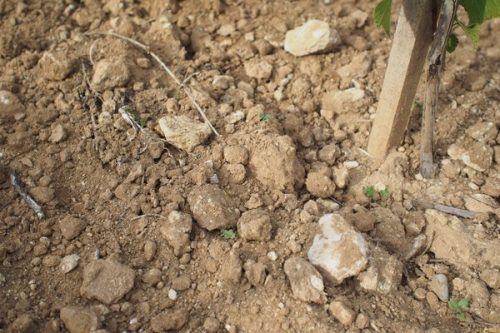
‘It was crazy at the time to create an estate in the Graves areas,’ says his son Jean-Jacques. ‘It is in the same geological area, still on limestone, which keeps going to Pujol-Sur-Cerons. Clos Floridène began with some old plots of Semillon. Now it is a sizeable estate of 39 hectares, and makes red as well as white wines.
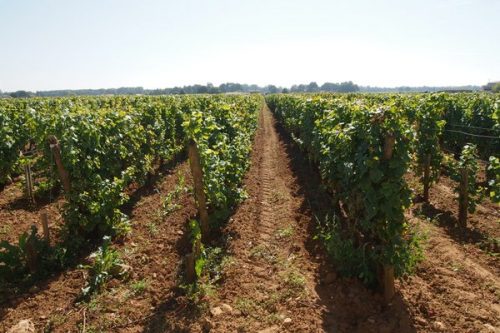
Achieving success with his own Bordeaux whites meant that Denis was in demand for his advice, which he ended up giving to most of the classified white wine estates. ‘My consultant activity started with Fieuzal in 1995, then added Malartic-Lagraviere, Pavillion Blanc of Margaux, and Carbonnieux,’ he said. From 2003 he consulted at Yquem and his colleague Christophe Ollivier worked for De Malle for 20 years. Others include Lafaurie-Peyragey and Rayne-Vigneau.
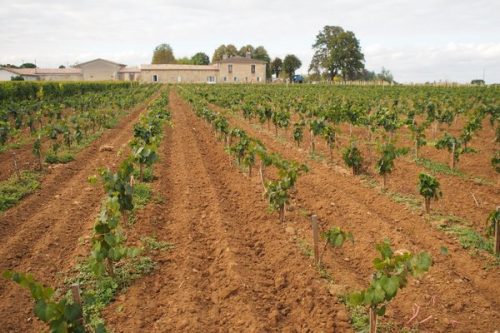
Famously, working together with Takatoshi Tominaga, Dubourdieu discovered the role of a group of sulfur-containing compounds, the polyfunctional thiols, in the aroma of white wines. ‘It was the discovery of my life,’ he told me. ‘No one could believe that thiols could be involved in the aroma of grape varieties, and that S-cysteinylated compounds were the precursors.’ He discovered many things, including the influence of the yeast turning these precursors into thiols during fermentation.
These thiols, particularly 3MH, 3MHA and 4MMP give the distinctive passionfruit, grapefruit and boxwood aromas that are typical of Sauvignon Blanc and botrytised wines, but which also occur in other grape varieties. This research has been followed up elsewhere, particularly in New Zealand, where Sauvignon Blancs from Marlborough show particularly high levels of 3MH and 3MHA.
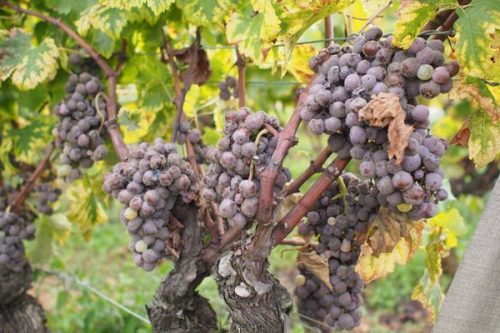
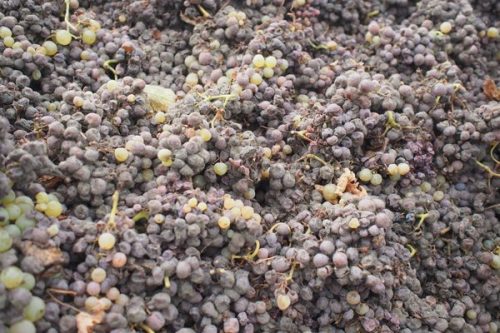
Denis also worked on oxidation, and demonstrated the role of reduced glutathione in protecting the wine against oxidation. This work also had a lot of relevance to the problem of premature oxidation (premox) in white Burgundy. ‘Oxidation reactions are catalysed by phenolics,’ said Denis. ‘Good white wine everywhere in the world should have low phenolics in the skins and high levels of glutathione. In pressing, polyphenols are oxidized to quinones, and if there’s too much quinone, you lose the reductive power of glutathione. It is important to understand this phenomenon for Sauvignon, which is more sensitive to oxidation.’
Denis thought that this insight was important for white Burgundy, where there have been premox problems. ‘I worked with Jadot,’ he said, ‘and there are no more problems there. Premox is like an aircraft crash: there is never just one reason, always two or three wrong things done. Independently of the composition of the grape, sluggish fermentations are one of the worst things for white wines in terms of oxidation.’
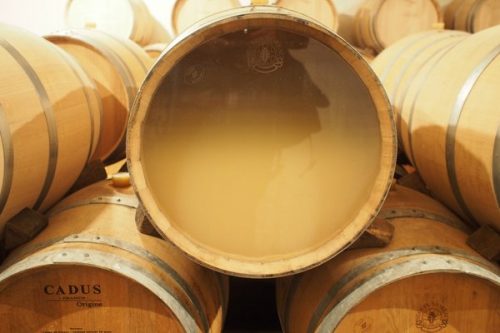
Denis liked limestone for white wines. ‘I like limestone soils because drought never exists on limestone,’ he said. ‘Phenolics are a reaction to drought and nitrogen deficiency. Phenolics give bitterness and astringency. With no anthocyanins in whites to combine with tannins the tannins are bitter and astringent.’
How do you get good levels of these nice thiols in white wines? ‘The level of the precursor is important, and the phenolic content.’ Press juice has high levels of both, and the wines are often disappointing because the precursors end up being oxidised. A good level of nitrogen in the juice is helpful (200 mg/l FAN). So the ideal juice would have low pH, high precursors and low phenolics.
Pressing is important. Denis approach was to destem, crush and press at low temperature (10 C). ‘We protect the first part of pressing against oxygen, and the second part we don’t protect.’ Normally there is no addition of SO2, unless the juice is clarified. The idea is to protect the part of the juice richest in glutathione and oxidise the phenolics for the latter part of pressing.
When it comes to botrytis, it’s important that the fungus acts on healthy, ripe, metabolizing grapes. They need to respond actively to the infection by the fungus, and there shouldn’t be too much time between ripeness and infection. ‘Infection is not only about concentration,’ he said. ‘It is stimulation of the production of aroma precursors by the pulp. When the grapes are becoming an old guy it is difficult to be excited by the fungus.’ More mature grapes simply concentrate their flavours, with honey and citrus, when they are infected. When grapes that are metabolically active get infected, then you get the polyfunctional thiols, with flavours of apricot, mango and grapefruit. ‘You want fast ripening and fast invasion.’
‘Purity is my obsession,’ said Denis. ‘Wines should be pure, like the music: you can’t have pleasure with off notes,’
Farming across the Dubourdieu domaines is more-or-less organic. ‘We haven’t used herbicides in 35 years,’ says Jean-Jacques. ‘We plough the soils.’ Harvest of the 400 plots takes two months. They make their own compost, too. ‘We don’t want bio certification.’ He says, ‘but we want to show that we make significant effort. Everything is relative, but we are bigger than average and want to show a significant sign and message of sustainability. We plough the soil. We are not crazy about letting grass on the soil because we want high acidity.’
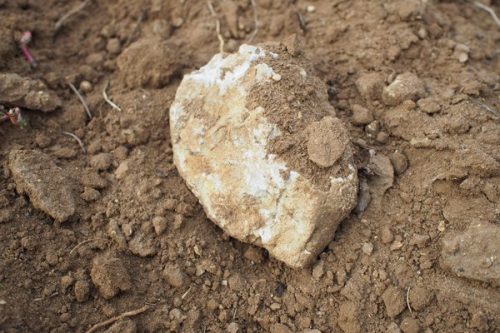
‘Here in Barsac this is important because we force the roots to go into the limestone,’ he says. ‘Ploughing the soil in Barsac is tough because there are rocks everywhere. It is not a simple process. On gravel soils it is a dream. Even in completely clay soils it is easier, but there when it is wet it is slippery. We work the soil exactly like my grandfather. My father was very attached with the ploughing, especially with dry white and sweet wines to keep the acidity high.’
Sauternes isn’t all that fashionable these days, but the Dubourdieus have a strong market for their wines. ’35-40% of the market for Sauternes is France,’ says Jean-Jacques, ‘with the UK 2nd. Japan is doing well and China little by little. Production is small and market is small. In our family range, it is not the most difficult to sell. If we follow the style of freshness and great expression, there is a market for that. We sell out every year.’ Since 2009 they have sold all their Sauternes under the name of Barsac.
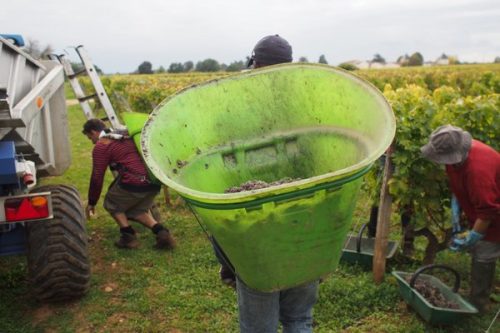
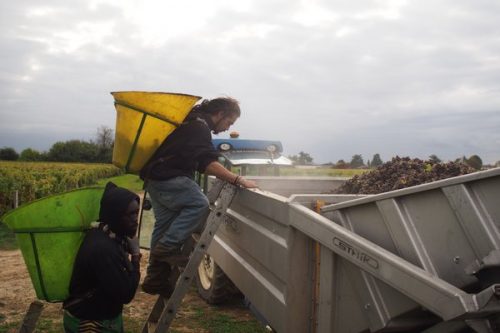
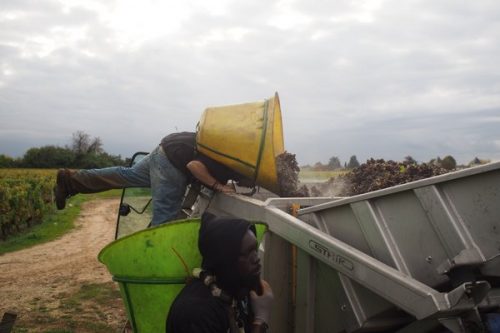
For Sauternes, the ‘better’ vintages in Bordeaux are not always the best. ‘In the bigger vintages with more concentration you get more VA, approaching 1 g/litre, and the wines don’t always age as well,’ says Jean-Jacques.
Science has been well applied across the Dubourdieu domaines. These are wines of precision, elegance, purity and lovely aromatic detail. It is no wonder that Denis was in such demand as a consultant, and his legacy has been a leap forward in quality for Bordeaux whites. Now the world needs to discover their qualities.
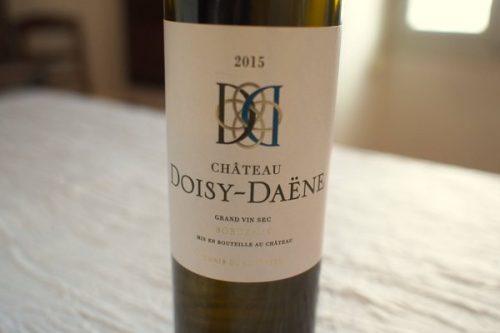
Château Doisy-Daëne Blanc 2015 Bordeaux, France
100% Sauvignon Blanc. Make 30-40 000 bottles of this each year. Normally dry whites in Bordeaux are from gravel, but this is limestone, and it gives a distinctive character to the wine. Very fine and expressive with lovely acidity underpinning the citrus and fennel fruit, with a hint of lanolin and quince. Linear with a lovely fine acid core. Lovely finesse here. 93/100
Clos Floridène Blanc 2015 Graves, France
50% Semillon from old vines and 50% Sauvignon. Semillon in barrel, 30% new, older oak for the Sauvignon. Linear and pure with lovely fresh citrus note: grapefruits and lemon peel. Hints of fennel and keen acidity with nice precision and purity. Has lovely bright acidity with nice taut complexity, and it will age well. 93/100
Clos Floridène Rouge 2012 Graves, France
The Merlot is on limestone and Cabernet (70%) is on gravel. Had an incredible mildew attack and lost 50% of the production. Very fresh and stony with lovely bright cherry and plum fruit. Such pure fruit here with nice precision and structure. Such an approachable with but has some mineral, stony notes. 91/100
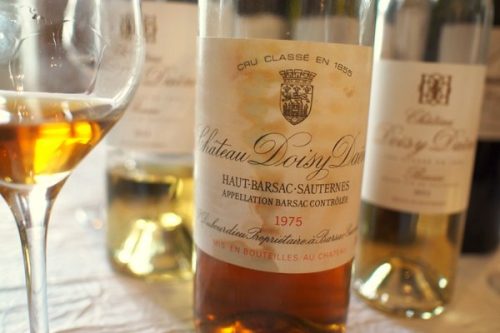
Château Doisy-Daëne 2012 Barsac, Bordeaux, France
One third new oak, aged for a year in barrel. A difficult year when Yquem didn’t make any sweet wine, but this is really good. ‘I really believe in the ageing potential of 2012,’ says Jean-Jacques. Half of normal production. Fresh, pure and linear with nice bright, balanced sweet peach and passionfruit notes, with some citrus fruits. Midweight with nice balance between the sweetness and the acidity, with a lovely smooth texture. Fine spicy notes and a hint of vanilla. Very fresh lemony finish. Superb. 94/100
Château Doisy-Daëne 2013 Barsac, Bordeaux, France
A difficult vintage for reds, but for sweet it was easy. Rain all summer and then lovely September and October. Lively and bright with lovely concentrated sweet lemon and pear fruit with some peachy richness. Melon and herb notes, too, with a linear finish. Not overly complex but with nice weight and focus and potential for development, with good acidity. 92/100
Château Doisy-Daëne 1975 Barsac, Bordeaux, France
Golden/brown colour. Fresh and lemony with a hint of spice and treacle (very faint), with nice grapefruit and nut characters. Some lanolin and quince jelly characters as well as traces of coffee and tea. Still tastes quite sweet but with a delicate savouriness. Lovely complexity here. Beautiful. Elegant and driking very well now. 94/100
Château Doisy-Daëne 1991 Barsac, Bordeaux, France
Marmalade and spice nose with some apricot and toast. Vivid and intense. There’s a minty edge to the palate which shows pear and peach, with good acidity and nice spiciness. Very distinctive with a savoury edge. Lovely pure spicy citrus fruits drive this with a rich toasty quality. Has some distance to go. Sweet but fresh with nice spicy detail, and a minty edge. 93/100
Château Doisy-Daëne 1990 Barsac, Bordeaux, France
One of the iconic vintages. Heavily botrytised. Gold/bronze colour. Malt, apricot and peach with toast and toffee notes. Very rich and harmonious with lovely texture and depth. Combines sweet grape, toffee and apricot flavours with a savoury, slightly earthy edge, and some pastry characters. Has immense concentration and richness with real harmony. 96/100
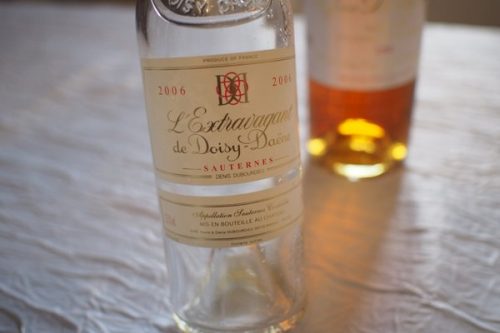
L’Extravagant de Doisy-Daëne 2006 Sauternes, Bordeaux, France
Grandfather started this cuvée in 1990. The idea is to make something more concentrated, but without feeling more concentrated – still fresh. Based mainly on Sauvignon Blanc, with 100% new oak. Complex, lemony and powerful on the nose with some grapefruit and spice. Very pure. The palate is very concentrated and rich with sweet, intense pear and melon fruit, as well as nice acidity. So linear and pure, showing great focus and power, as well as harmony. 95/100

L’Extravagant de Doisy-Daëne 2013 Sauternes, Bordeaux, France
75% Sauvignon Blanc, 25% Semillon. Since 2015 this is close to 100% Sauvignon. Lively, intense and aromatic with subtle herbal notes alongside the intense pear, grape and peach fruit. Melony and exotic, showing great concentration, but still fresh. Intense with lovely freshness on the finish. Nice power and weight here with a lovely pure, exotic fruity quality. 96/100
Alternative Bordeaux
- Biodynamics at Château Palmer
- Château Falfas, Côtes de Bourg
- Experimenting with organics at Lafon-Rochet
- Organic farming in the Cru Bourgeois
- Natural wines at Château Peybonhomme
- White wines with the Dubourdieus
Leave a Comment on Alternative Bordeaux (6) Dubourdieu: white wines, dry and sweet